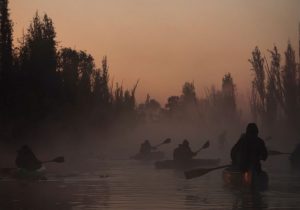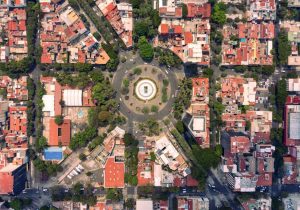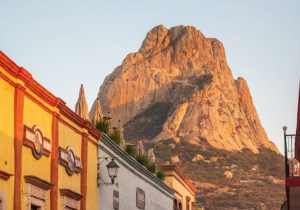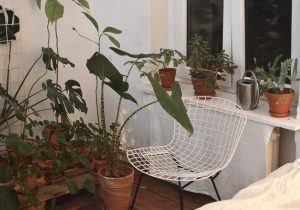
Public space as landscape
Andrea Esparza Aguiar share with us an analysis of SEDATU’s first Mexican Of ficial Standard, NOM-001- SEDATU-2021, in the art icle “Public space as landscape.”
The most comforting thing about landscape architecture in the private sector is to change the idea of “gardening” and recognize landscape architecture as the design of aromas, sounds, textures, even the microclimate of an outdoor space with the aim of create an environment of well-being, involving “hardscape” elements and “landscape” living elements that together favor the pre-existing and identity of the site. Landscape architecture is the habitat where we find ourselves.
In the public sector, landscape architecture is lived through the public space, this being the set of natural, built and superimposed components that create the habitat where we live; and its creation, recovery, maintenance and defense is regulated by normative instruments coordinated between the three orders of go- vernment, acquiring a political dimension.
At the federal level, the Ministry of Agrarian, Territorial and Urban Development (SEDA- TU) is responsible for land planning and it is through the General Law on Human Settle- ments, Land Planning and Urban Development1 where it acquires powers to conduct policy territory through planning actions and public investment programming.

People kayak in the canals of Xochimilco
Photography: Anamabela
Among the planning actions generated through SEDATU, on February 22, 2022, SEDATU’s first Mexican Official Standard, NOM-001-SEDATU-20212 Public Spaces in Human Settlements, was published in the Official Gazette of the Federation. It is a normative instrument of obligatory observance in the creation and/or updating of all urban develop- ment plans and programs that are generated from its entry into force.
Great challenges arose in the four years of development of the NOM, as well as reflections, approaches, advances and setbacks. Through this I will allow myself to share some analyzes from the lens of landscape architecture, especially those related to the relationship between people and nature.

Aerial view of a roundabout in Mexico City
Photography: Israel Martín Torres
1. Natural areas (such as reserves) are not public spa- ces. The use and enjoyment of the human being is in second place, below environmental conservation.
2. Public space is needed both in a big city and in small rural communities. The concept “right to the city”3 should be modified by “right to the territory”.
3. The larger the human settlement, the smaller the dimensions of the dwelling and the green area of the urban commons, that is, the contact we need to have with the landscape, becomes more important. 4. Public space has to be planned. As Guilles Clement says in his publication Manifesto del Tercer Paisaje, “every arrangement generates a residual space”4. It recognizes that the existence of underutilized spaces within the urban sprawl is natural; however, it is a mistake to determine that this is the perfect place for public space.
3 Guilles Clement, Manifiesto del Tercer Paisaje. Gustavo Gili, 2018.
4 ONU-Habitat. “Componentes del derecho a la ciudad.” ONU-Habitat. https://onuhabitat.org.mx/index.php/componentes-del-derecho-a-la-ciudad (Consultado el 23_11_2022)

View to the mountain
Photography: Lehi Lara Leyvas

Contact with nature in small spaces
Photography: Skylar Kang
5. Unlike natural areas, appropriation by human beings is a priority in public space. Public space by definition is intended for collective use, enjoy- ment or exploitation, being of generalized access and free transit.
6.Public space does not always have green areas. There- fore, there is not necessarily a direct relationship with climate change adaptation and mitigation actions.
7.The regulations and normative instruments do not embrace the needs of “otherness”5, therefore, it is essential to be sensitive to the requirements of vulnerable groups. The place where you are right now, was once part of an ecosystem, be it your home, the street or a park. Landscape architecture allows us to glimpse interventions in balance between the natural and the built.
5 Tomado de una charla de la Arq. Gabriela Carrillo para la UNAM.
References
- Congreso General de los Estados Unidos Mexicanos, Ley General de Asentamientos Humanos, Ordenamiento Territorial y Desarrollo Urbano. Diario Oficial de la Federación, 2016.
- Comité Consultivo Nacional de Normalización de Ordenamiento Territorial y Desarrollo Urbano, NORMA Oficial Mexicana NOM-001-SEDATU-2021, Espacios públicos en los asentamientos humanos, Diario Oficial de la Federación, 2022.
- Tomado de https://onuhabitat.org.mx/index.php/componentes-del-derecho-a-la-ciudad al 23 de noviembre de 2022.
- Guilles Clement, Manifiesto del Tercer Paisaje. Gustavo Gili, 2018.
- Tomado de una charla de la Arq. Gabriela Carrillo para la UNAM.











